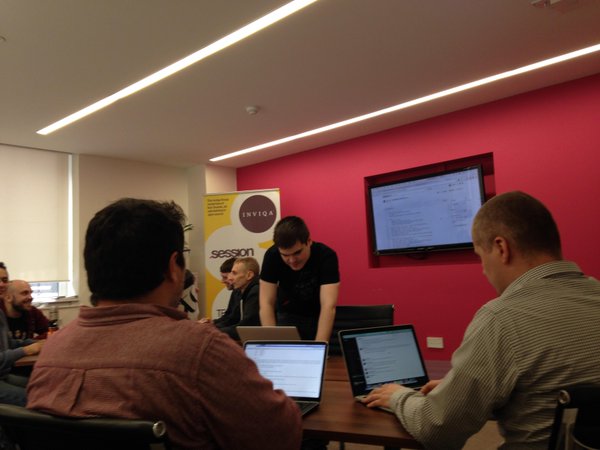stakeholderwhisperer.com

Hi. My name is Konstantin Kudryashov. Although I’ve written software for years, I realised only recently that writing code was more about communicating with humans than computers. To become a better engineer, I realised I needed to become a better communicator both inside and outside the code to create a stronger connection between the code I write and the people it helps.
As a technical consultant as well as an engineer, I spend as much time working with business stakeholders and sticky notes as I do with fellow engineers and a code editor. Bridging both worlds often means I have to find new ways of communicating ideas and information and ensuring that nothing gets lost in between. This blog documents my progress at improving communication between the people caring about software products and the people building them. I hope you find this blog a useful starting point for thinking about software development as a talking, rather than writing, activity and would be interested to hear your thoughts on the subjects discussed here.
Posts
Maximum Feasible Miracle
Current technological constraints heavily influence many of our product decisions. When figuring out the minimum in your Minimum Viable Product takes too much energy, consider temporarily discarding all of the constraints. Later, incrementally reintroduce them back, monitoring the impact on the product. Exploring product without constraints allows your team to reconnect with the underlying customer behaviour and identify both smaller and better ways to serve it — the ways hidden behind years of bad memories about intractable problems.
Impactful Reports
Often, when building a software system, teams are asked to develop a series of reports or even a generalized report builder. Every single requested report is hiding a need, which it was devised to fulfill. Stating the need explicitly and reworking specifications to better reflect it, makes it easier to plan, prioritize and deliver the software that matters. Clearly stated objectives allow teams to fundamentally challenge underlying assumptions and develop reporting capabilities with a bigger impact.
Sharing Learning via Code
When you build a new feature as a team, and it requires much new learning, do not hoard new knowledge in your head. Instead, incrementally commit each unit of learning into working code. Committing and exposing the intermediate learning through code helps to spread the knowledge within the team faster. Problems get discovered early into implementation instead of much later. Moreover, the need for comprehensive documentation decreases as knowledge sharing through code and collaboration increases.
Valuable Products
The problem with talking about the “value” of software is that it is often perceived differently by people using it and people building it. Users increasingly expect software to change. However, when building software products, we (the creators) often fail to accommodate these expectations, focusing instead on the elusive “finished” product. That creates a tension between what users want and what we deliver.
The Innovation Slider
Every time I meet a client to discuss their new project plans, I encounter the same question: “I want my software to be unique and different. How much will it cost?”. The problem is that unique products and true innovation are difficult to estimate, and even harder to accurately budget for. Helping a business find the balance between the innovation they need, and the predictability they want led me to create the Innovation Slider, a tool you can use to harmonise the split between innovation and predictability in software projects.
Economy of Tests
A common complaint with teams that first try their hand at automated testing, is that it is hard, costly, and not worth the effort. On the other hand, supporters say that it saves them time. In this post, we’ll try to add some nuance to the discussion. We’ll take a look at how different levels of automated testing affect the cost of development, both in the short and the long term, for both greenfield and brownfield projects. Finally, we’ll look at a simple strategy for introducing tests and migrating them across test levels, in order to reduce maintenance costs.
Introducing Modelling by Example
For the last year I have been experimenting with the new approach to a Behaviour-Driven Development, which could be summarised as “Ubiquitous Language is a thing again”. The core premise of this approach is that if you take Ubiquitous Language seriously and push for it in your scenarios, you open the door to doing a Domain-Driven Design while you’re doing Behaviour-Driven Development’s red-green-refactor cycle. By embedding Ubiquitous Language in your scenarios, your scenarios naturally become your domain model, which you can use to develop the most important part of your application - a core domain.